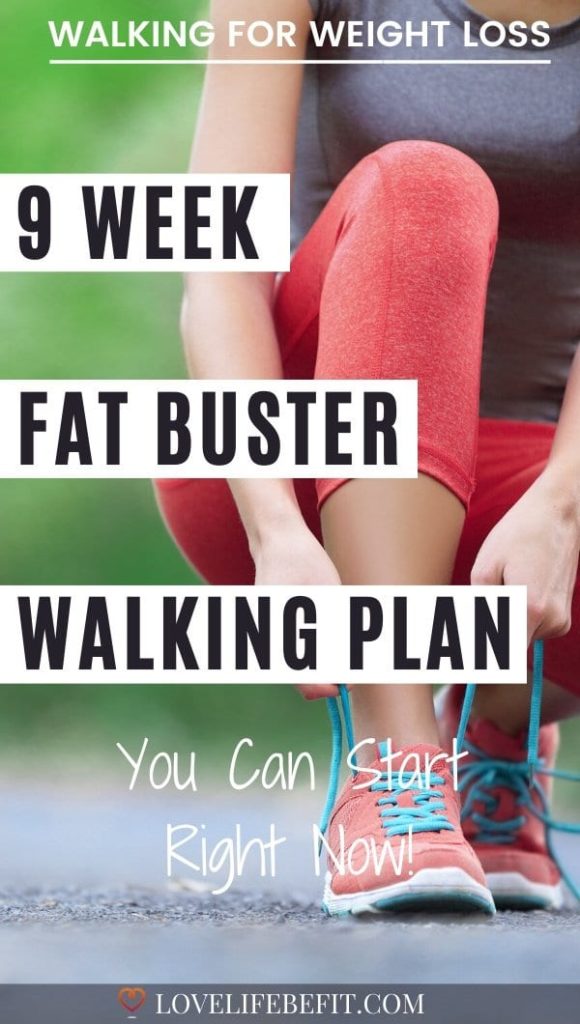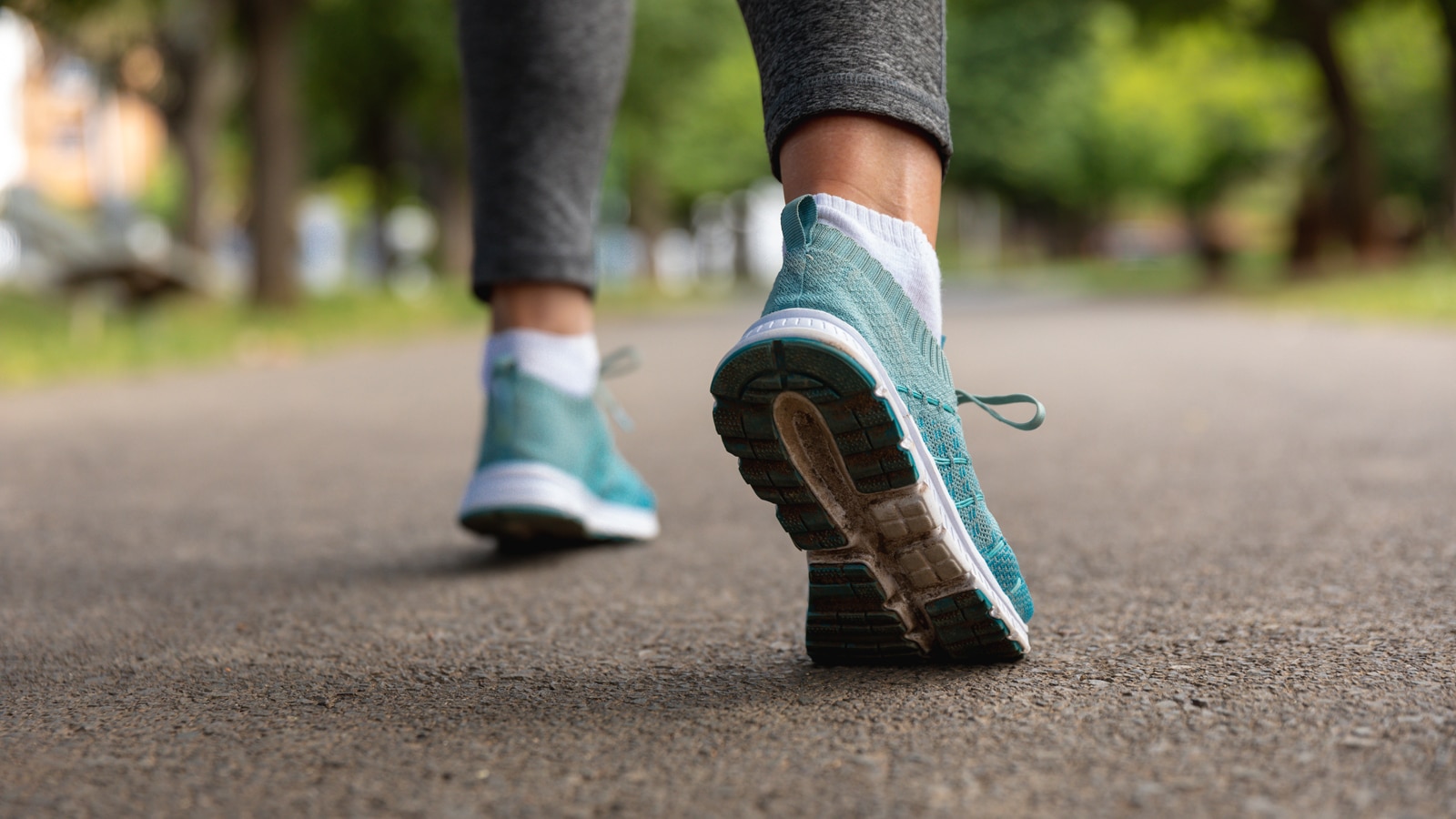Walking For Weight Loss: Everything You Need To Know
It sounds simple – walk and lose weight. And in many ways it is. But there are a few things you need to know about walking for weight loss. I’m here to help…
This post will cover how to get started, how far to walk to lose weight plus what works for calorie burn and what doesn’t, and how to make your walk schedule effective.
Walking doesn’t need expensive gym memberships or the latest sportswear. Just comfortable shoes and clothing you can move in. If the thought of running fills you with dread, be reassured walking for weight loss can be just as good at helping you hit your weight loss goals.
If you’re struggling with weight gain and want the best way to lose weight without restrictive dieting and eating fewer calories – read on…

How Walking For Weight Loss Works
I wish there was an easy answer but losing body weight is all about the math. Create a calorie deficit to lose weight.
This means the calories you need to burn throughout the day must exceed your calorie intake.
In theory, it takes a deficit of 3500 calories to burn a pound of body fat. Or, eat less and move more to lose weight.
If only it was that simple. But until medical science comes up with something a bit more reliable, that takes account of every factor in the weight loss equation from low metabolism to thyroid function, this is what we will work with.
How Many Calories Will You Burn In One Mile?
Just bear in mind your body is complex.
The number of calories you burn walking one mile is about 100 calories.
The exact figure for how many calories you burn depends on your gender, current body weight, pace, age, metabolic rate, and fitness level.
How Much Should I Walk To Lose Weight?
Walk 5 miles a day and eat a healthy diet with a daily deficit of 500 calories and you will lose weight. How much weight you’ll lose is harder to pin down. Typically young men will lose one to two pounds per week. For everyone else, especially older adults, it could be as little as half to one pound per week. But you will lose weight.
How much walking for weight loss depends on your goals such as your target BMI and your calorie intake.
Jumping straight into 5 miles a day is far too much for most people. If you want to avoid the risk of injury, try walking 2 miles a day first or follow my Fat Buster Walking Challenge to build distance and pace gradually.
How Much Walking To Lose Weight Based On Research?
The Centers For Disease Control And Prevention (CDC) recommends either 150 minutes of moderate-intensity aerobic physical activity, 75 minutes of vigorous-intensity aerobic activity, or an equivalent mix of the two each week.
Walking at a brisk pace counts as moderate-intensity exercise. You can still talk as you walk but your breathing is heavier and it takes some effort to maintain the pace.
Vigorous intensity could be intervals where you alternate a fast-paced walking speed with walking at a moderate pace. It depends on your fitness level. At vigorous intensity talking is difficult – your heart rate is elevated and your breathing is hard.
Walking more is one of the most effective weight loss tips.
This is backed up by research published by the American Diabetes Association ADA. If you’re carrying extra weight, walking can really help.
The individual response to exercise and weight loss from physical activity is difficult to predict but consistently exercising for more than 150 min/week of moderate-intensity exercise appears to help with weight loss and weight maintenance over the long term.
ADA concluded any failure to lose weight probably comes from over-reporting of exercise and under-reporting of food intake.
Walking will aid weight loss as long as you commit to regular walks and don’t reward yourself for the effort with high-fat, high-sugar treats.

Health Benefits Of Walking
Walking regularly comes with many overall health benefits beyond weight loss. These include:
– Improved cardiovascular fitness
– Lower blood pressure
– Strengthened bones and muscles
– Improved joint mobility
– Diabetes management
– Improved mood and mental health.
Don’t underestimate the power of daily walks!
How Many Steps To Lose Weight?
Walking is a great way to improve your health and fitness but how many steps a day does it take to lose weight?
Many people find that a brisk walk every day is a good way to commit to an exercise plan.
This way you’re establishing a walking routine. You can set aside time in your busy schedule for walking – it could be one long walk or 2 to 3 short walks a day.
But how many steps does it take to lose weight?
Walking 10,000 steps a day.
10,000 steps a day of brisk walking is a good fitness goal. It’s about 4 to 5 miles – less if you have a short stride, more if you have a long stride.
Walking 10,000 steps will take around 100 minutes a day at a standard pace of 3 miles per hour on a flat surface … so it’s a big commitment. Worth it if you’re committed to losing weight.
You could aim for a lower number of steps – but the further you walk, the more calories you’ll burn. Just be sensible and build up to 10,000 steps a day gradually over a couple of weeks.
Although walking is a low impact exercise with less injury risk than running, you can still overdo it.
Related post: How Much Are 10,000 Steps In Miles And Calories Burned?
Walking 20,000 steps a day
This is a huge commitment and most people just don’t have the time. Plus, it can put a strain on your joints and muscles.
But if you’re already at a high level of fitness and have the time to do it, 20,000 steps a day can increase weight loss. Just make sure to listen to your body and rest when needed.
Related post: How Many Steps In One Mile Walking Or Running?

How To Lose Weight By Walking
When you’re starting a walking for weight loss program, there are a few things to think about before heading out the door.
Do You Need A Medical Check Up?
It’s best to be cautious. Get a check-up if you haven’t exercised in a while, you have any health issues such as high blood pressure and heart disease or you’re pregnant.
Preparing To Walk
Invest in walking gear such as comfortable walking shoes and clothing. Any non-restrictive clothing is fine for about town but you may need a raincoat!
Walking Technique
Learn to walk with good posture and walking form.
Walking Schedule
Plan your workouts in advance. Work out how far and where you’ll be walking. Good walking routes will help with motivation. Try and find traffic-free footpaths such as in a local park.
Motivation
Staying motivated is key to success. Set aside time for walking in your daily routine and reward yourself with these non-food treats for weight loss!
Use A Walking App
Make your daily walk more interesting and stay motivated by using an app such as MapMyWalk. You can share your activity with friends!
Related post: Walking Program For Beginners
Start Walking
Always warm up properly at the start of a walking session. You can try dynamic stretching or walk at an easy pace for 5 minutes before you start walking briskly.
Pace yourself and avoid walking too fast. Don’t compare yourself to others. Your speed when you’re walking briskly will depend on your fitness level.
The aim is to walk at a pace where you can talk but you’re making an effort to keep the speed up. You should feel a little out of breath, your heart rate will be elevated and you’ll be sweating a little.
Walking fast will burn calories at a higher rate. If you find you still have lots of energy towards the end of your walking session, try power walking for the last 5 to 10 minutes.
Power Walking
Power walking is at a speed at the upper end of natural walking. A typical walking pace is 3 miles/hour on the flat. Power walking can be as high as 4 to 5.5 miles/hour.
It can look exaggerated but good form should simply flow from your natural walking technique. Try to swing your arms gently and use the power of your glutes for extra forward motion.
It’s an effective way to burn extra calories but remember – keeping to a walking plan is more important for weight loss efforts.
Related post: How To Get Results: Walking For Weight Loss

Tips For Your Walking Routine
Find ways to walk more during the day from leaving the car at home to walking during your lunch break:
Start Your Day With A Walk
Walking in the morning sets a positive tone for the day ahead. It can also help improve your sleep quality.
Schedule Regular Walking Breaks
Set an alarm on your phone or computer to remind you to take regular walking breaks during the day.
Change Your Commute
Instead of taking the car, walk and use public transport. Walking from your home to the train station or bus stop will add to your daily total.
Walking In The Evening
An evening walk can be a great way to de-stress from the day and burn extra calories. Just remember to wear reflective clothing if it’s getting dark outside.
Take Your Dog For A Walk Or Borrow One
Very few dogs get enough exercise. Make your dog happy and healthy by going for proper walks every day. If you haven’t got a dog – borrow one!
Walk Around The office.
Take the stairs instead of the lift, or walk to the opposite end of the building to discuss an issue in person instead of picking up the phone. The personal touch may be appreciated and will add to your calorie burn!
Join A Walking Group
Find family members or friends to walk with or join a local walking group. It helps to walk with people with the same weight loss goals and fitness targets.
Walking Workouts
Mix up your walking program with different walking routes and levels of intensity to increase calorie burn. Always warm-up first with 5-10 minutes of easy walking.
Long walks
Go further at weekends when you have the time and seek out more challenging routes. For longer walks, walk at a steady pace. Try and walk in nature to improve your walking experience.
Interval walking
This is a good way to add variation, where you alternate walking fast for one minute and then at a moderate pace for two minutes. Repeat for 30 minutes.
Incline walking
This can be on hills or a treadmill. Walking on an incline burns more calories and improves your fitness.
Alternate 8 minutes uphill followed by 2 minutes of recovery. Repeat for 30 minutes in total.
As you get fitter find a steeper hill to walk up or increase the incline on the treadmill.
Related post: Walking For Weight Loss Plan – Fat Busting Workout Schedule

How Effective Is Walking For Weight Loss?
Walking for weight loss is effective if you walk several times a week and eat a healthy diet. Avoid replacing the calories you burn walking with over-eating or high-fat, high-sugar treats.
For best results aim to walk at least three to five days a week. Walking uphill or walking faster burns more calories.
A good target is to aim for one hour of walking a day or 8,000 to 10,000 steps.
Combining walking with strength training can increase muscle mass, build leg muscles, and make walking for weight loss more effective.
Diet is just as important as exercise – try to eat better and consume fewer calories by making small changes to your diet.
Related post: Why Your Weight Loss Is Slow (And What To Do About It)






